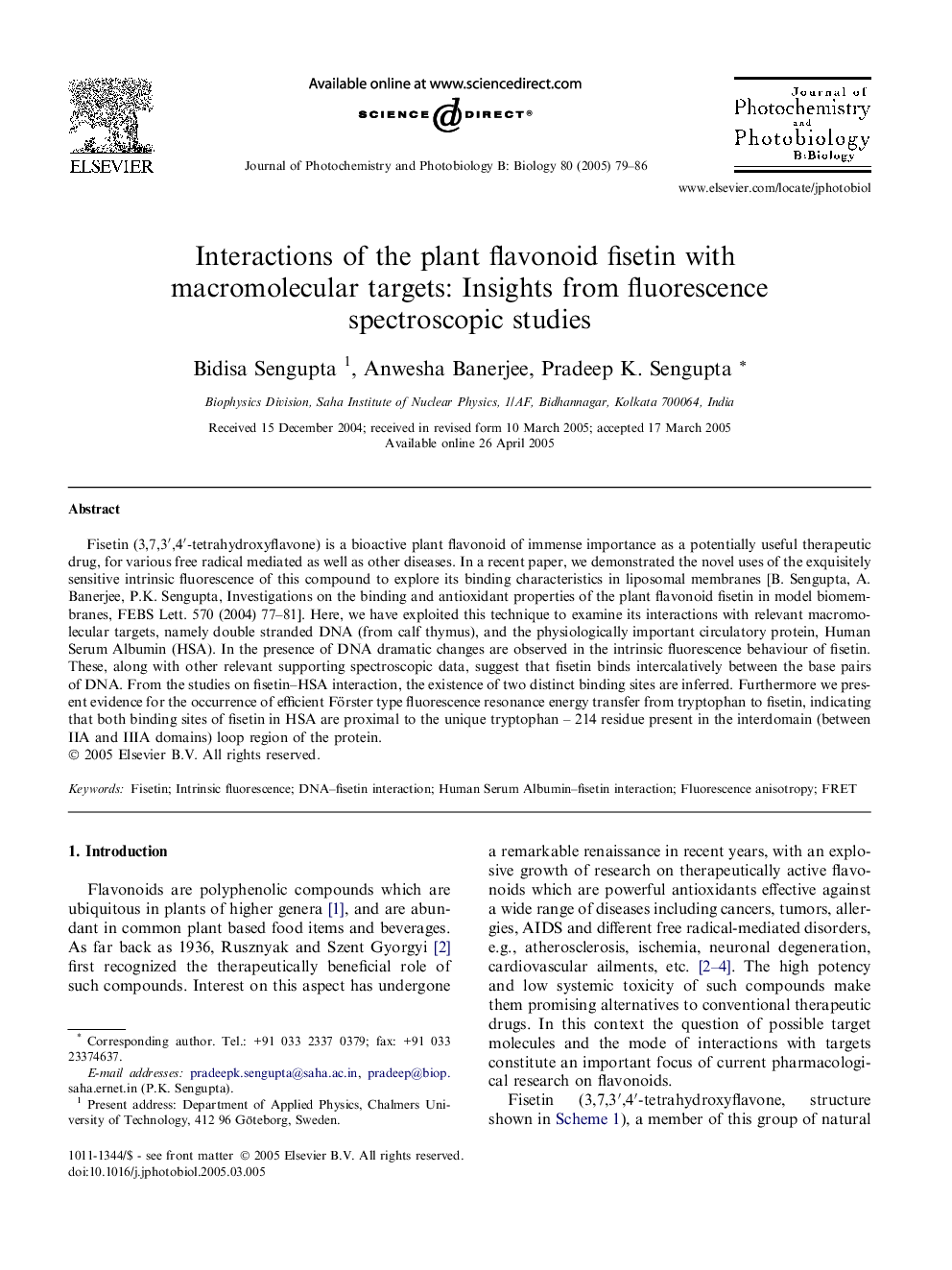| Article ID | Journal | Published Year | Pages | File Type |
|---|---|---|---|---|
| 9607024 | Journal of Photochemistry and Photobiology B: Biology | 2005 | 8 Pages |
Abstract
Fisetin (3,7,3â²,4â²-tetrahydroxyflavone) is a bioactive plant flavonoid of immense importance as a potentially useful therapeutic drug, for various free radical mediated as well as other diseases. In a recent paper, we demonstrated the novel uses of the exquisitely sensitive intrinsic fluorescence of this compound to explore its binding characteristics in liposomal membranes [B. Sengupta, A. Banerjee, P.K. Sengupta, Investigations on the binding and antioxidant properties of the plant flavonoid fisetin in model biomembranes, FEBS Lett. 570 (2004) 77-81]. Here, we have exploited this technique to examine its interactions with relevant macromolecular targets, namely double stranded DNA (from calf thymus), and the physiologically important circulatory protein, Human Serum Albumin (HSA). In the presence of DNA dramatic changes are observed in the intrinsic fluorescence behaviour of fisetin. These, along with other relevant supporting spectroscopic data, suggest that fisetin binds intercalatively between the base pairs of DNA. From the studies on fisetin-HSA interaction, the existence of two distinct binding sites are inferred. Furthermore we present evidence for the occurrence of efficient Förster type fluorescence resonance energy transfer from tryptophan to fisetin, indicating that both binding sites of fisetin in HSA are proximal to the unique tryptophan - 214 residue present in the interdomain (between IIA and IIIA domains) loop region of the protein.
Related Topics
Physical Sciences and Engineering
Chemical Engineering
Bioengineering
Authors
Bidisa Sengupta, Anwesha Banerjee, Pradeep K. Sengupta,
